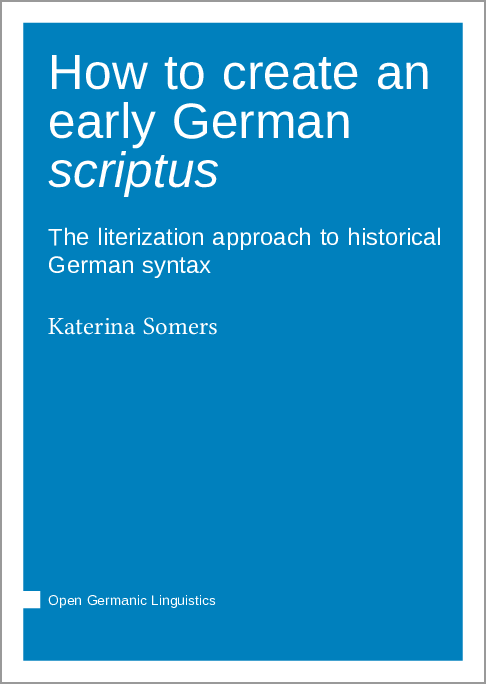We log anonymous usage statistics. Please read the privacy information for details.
How to create an early German scriptus: The literization approach to historical German syntax
Synopsis
This book presents a new methodology for the study of historical varieties, particularly a language’s early history. Using the German language’s first attestations as a case study, it offers an alternative to structuralist approaches to historical syntax, with their emphasis on delineating the shapes and mechanisms of early grammars. This focus has prompted Germanists to treat the data from the eighth- and ninth-century corpus with suspicion in that its texts are either poetic or translational. That is, if the unquestioned object of inquiry is a historical cognitive grammar, one ought to isolate – and perhaps discount entirely – data that are the product of confounding factors, like a poetic meter or a Latin source text. Otherwise, these competence-obscuring examples risk undermining scholars’ understanding of a genuine early German grammar.
Rather than this “deficit approach,” the current volume proposes that scholars treat each early attestation as an artifact of “literization,” the process through which people transform their exclusively oral varieties into a written variety. Each historical text features a scriptus, that is, an ad hoc, idiosyncratic, and localized literization created by a person (or team of people) for a particular purpose. The challenge of understanding texts in this way lies in the fact that there is little to no direct evidence pointing to the specific identities of early medieval literizers, their motivations, and the nature of the multiple spoken competencies that fed into their scripti.
In order to conceptualize early medieval German and the syntactic variation it exhibits as a sociolinguistic phenomenon, this book details the linguistic resources that were available to the literizer and are, happily, accessible to the modern researcher. First, there is Latin. Though illiterate in their own multilectal vernacular in the sense that no German scriptus existed until they developed it, literizers were educated in this highly literized language and the classical metalinguistic discourse, known as grammatica, that was associated with it. Second, there are the linguistic patterns of elaborated orality, that is, the varieties that are characteristic of public life and the oral tradition in exclusively oral communities. Though the patterns of a peculiarly German elaborated orality are lost to history, those of other traditions and cultures are attested and should also inform how scholars conceive of a multilectal early German.




